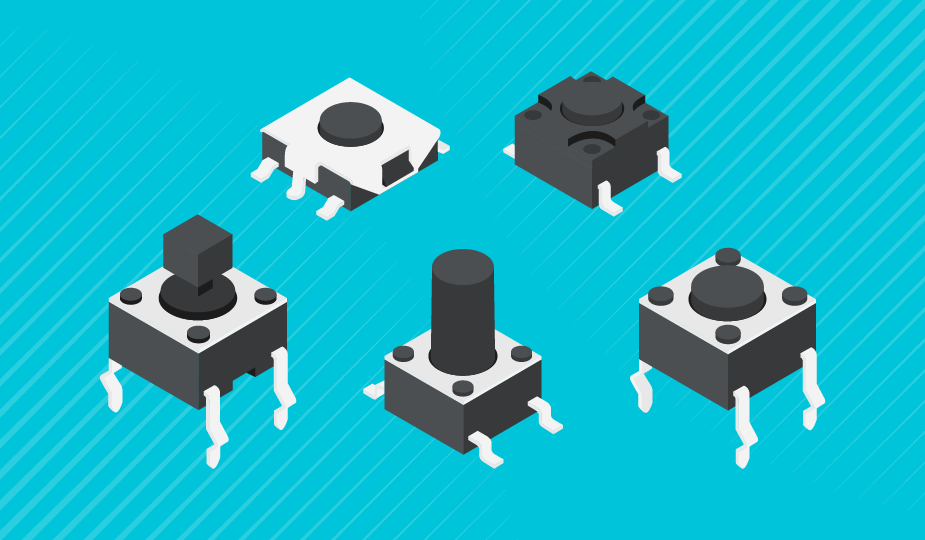Custom keyboards with tactile switches provide a better feedback.
Exploring the Advantages of Tactile Switches Over for Your Following Project
Responsive buttons, characterized by their recognizable responses, are crucial for improving user interactions in technology. These parts not only validate input through physical feeling however also facilitate operation in atmospheres where acoustic or aesthetic signs want. As sectors increasingly focus on straightforward user interfaces, the fostering of responsive switches throughout various fields-- from customer electronic devices to industrial equipment-- values consideration. To recognize their complete possibility, one have to discover both their functional benefits and diverse applications.

Recognizing Tactile Switches: Just How They Function and Their Kinds

These switches are available in different types, including dome, leaf, and tablet. Dome changes, which use a rubber dome to supply resistance, are prominent for their longevity and cost-effectiveness. Leaf buttons, on the various other hand, include a level, spring-like system that uses a sharper click. Tablet buttons are known for their small dimension and are often made use of in gadgets with room restrictions. Each kind uses distinctive tactical responses customized to certain application requirements and user preferences.
The Function of Tactile Comments in Customer Experience
Customer experience is significantly boosted by tactile responses, which offers as a vital bridge in between the device and its individual. Responsive buttons, by their actual nature, provide a physical feedback to individual actions, confirming inputs with a visible feeling.
In the world of availability, responsive comments plays an essential function. Hence, tactile responses is basic in making intuitive and efficient user experiences (tactile switches).
Comparing Tactile Changes With Various Other Sorts Of Buttons
While responsive buttons use conclusive feedback that helps in ease of access and customer self-confidence, it is essential to analyze how they compare to other kinds of buttons used in electronic devices. Direct buttons, as an example, provide a smooth keystroke without the tactile bump, which can be more effective for jobs needing fast vital presses, such as pc gaming. They do not have the distinct responses that helps stop keying errors evident in tactile buttons.
On the other hand, clicky buttons, comparable to tactile variants, provide distinct comments. Somewhat, responsive buttons strike a balance in between the quiet procedure of linear buttons and the loud assurance of clicky switches, making them functional for both noisy and silent setups.
Practical Applications of Tactile Switches Over in Various Tasks
Various contemporary electronics incorporate tactile switches due to their dependable responses and user-friendly interface. These parts are particularly widespread in gadgets requiring precise customer control. As an example, consumer electronic devices like key-boards, push-button controls, and video gaming controllers employ tactile buttons to enhance the customer experience by offering immediate responsive responses upon actuation. This responses guarantees customers of their input registration, which is crucial in high-speed video gaming or information entrance jobs.
In addition, tactile switches are discovered in numerous industrial applications. They are used in producing tools panels and portable diagnostic tools where operators profit from clear functional feedback during machinery handling. Medical gadgets additionally utilize tactile switches, contributing to their safety and security and performance. These buttons enable health care specialists to run devices swiftly and with precision, important in emergency situation and medical setups. Hence, responsive buttons prove essential across a broad spectrum of industries, using both performance and dependability.
Tips for Finding and Integrating Tactile Switches Over in Your Layouts
When picking tactile switches for various design tasks, it is crucial to take visit our website into consideration numerous crucial aspects to make sure optimal performance and assimilation. Assess the force needed for actuation and the button's life span. Designers have to match these specs with the application's demands to avoid early failure or user pain - tactile switches. Next, consider the dimension and footprint of the button. Small designs might require smaller buttons, which could affect the tactile feedback and longevity.
Furthermore, the environmental conditions where the tool will run are crucial. For jobs exposed to wetness or dirt, selecting buttons with greater IP ratings to stand up to such elements is recommended. Ultimately, integration simplicity need to be evaluated. The button ought to be compatible with the existing circuit style and placing requirements. Utilizing buttons with pre-soldered leads navigate here or those that supply clear soldering guidelines can simplify the setting up procedure, ensuring a trusted and efficient integration into the last item.
Verdict
